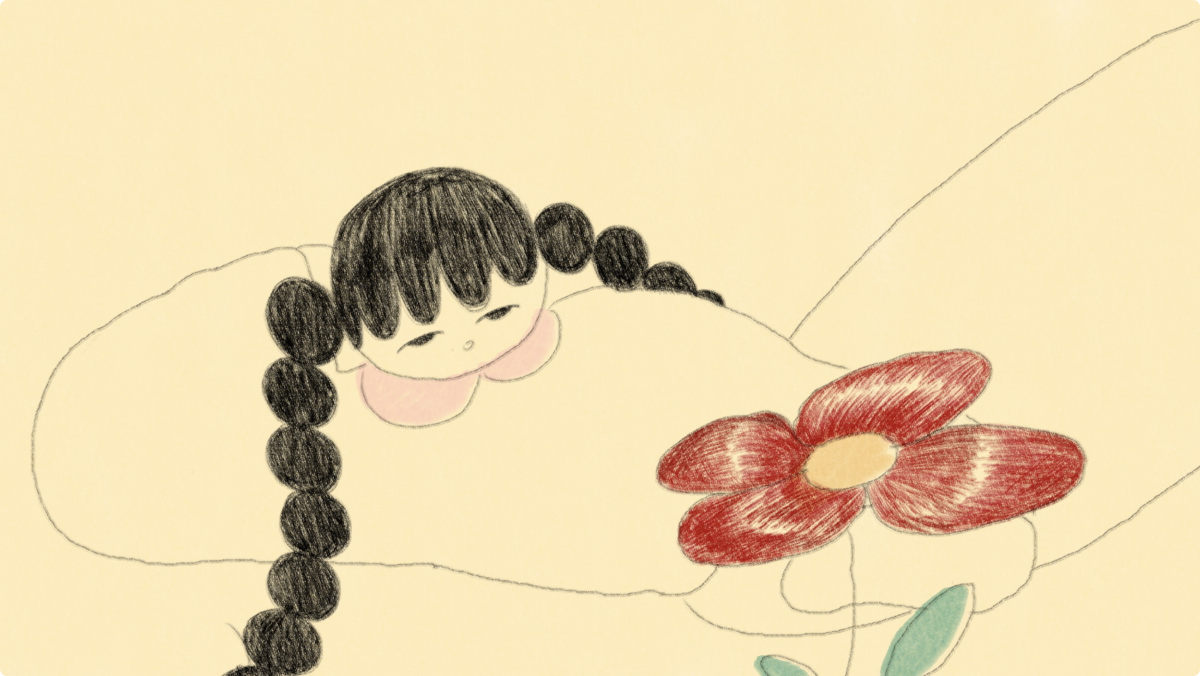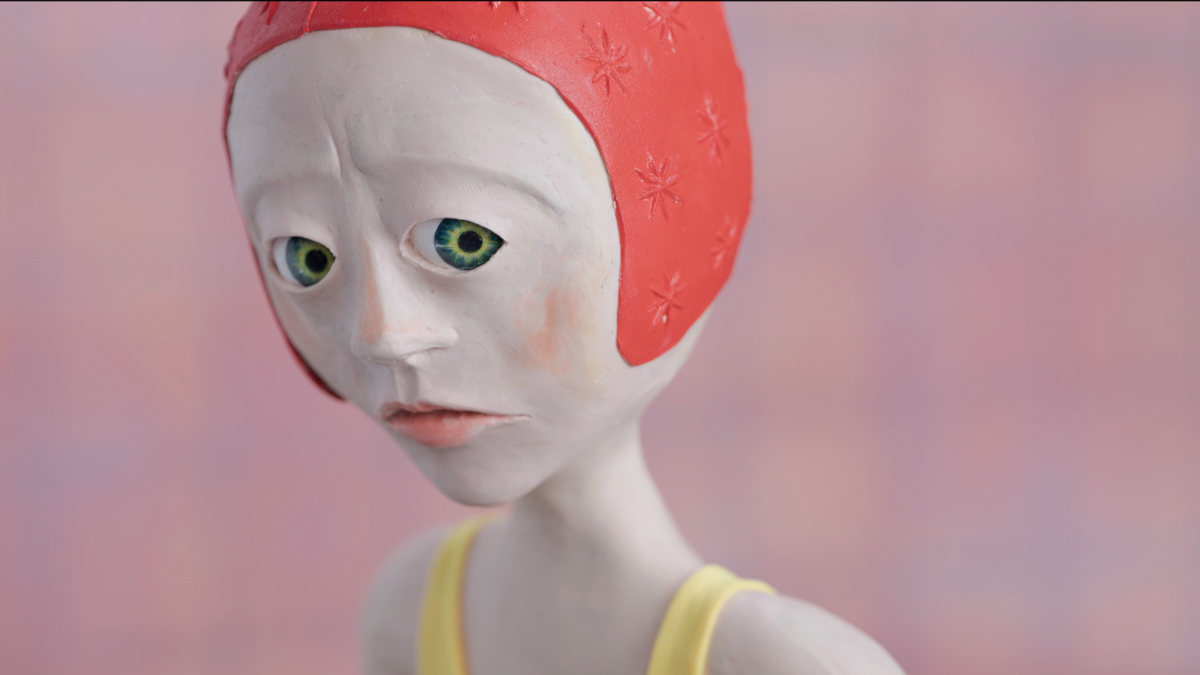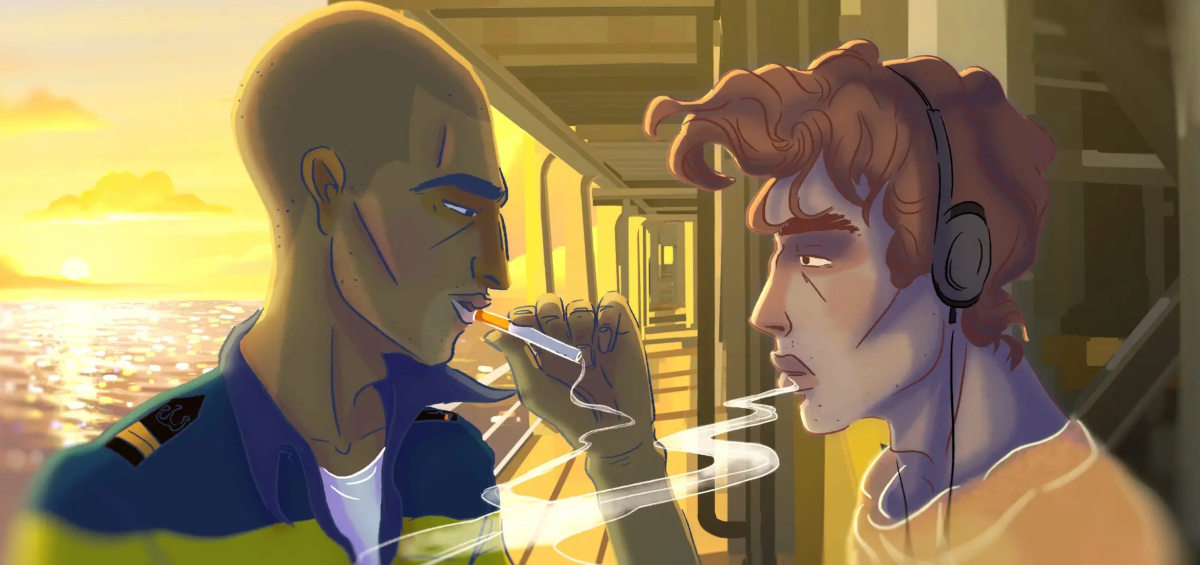Independent Animation Shorts
Swallow Flying to the South by Mochi Lin

Spring 1976, 5-year-old Swallow is abandoned at a public boarding preschool in central Beijing. When the persimmons are ripe, Swallow masters how to cry, but doesn't forget how to fly.
This is the story behind the acclaimed puppet animation film 'Swallow to the South' by RISD graduate, Mochi Lin. The 18-minute film captures a very sensitive period in China's past; we asked the director to tell more about her own take and experiences.
ZF: If I get it correctly, the story seems to talk about your mother, being a small kid in China's Cultural Revolution. Apart from being a personal issue, what attracted you to this story?
ML: Indeed, the film is a tribute to my mother, who spent her whole life struggling in and eventually battling the system courageously. It tells my mother’s childhood experience during the Chinese Cultural Revolution. The title is inspired by her name, “Swallow”, also one of the most common birds in Beijing. These birds migrate to the South every winter to seek warmth and shelter. Furthermore, at a time when my country of birth is still going through unending misery, I hope to speak for those who are condemned to silence.
ZF: What was your research like? Personal interviews, book and footage consulting, and anything else? And did you find things you never thought to be there?
ML Preschools during the Chinese Cultural Revolution were not well-documented under camera. I read a book called 'Preschool in Three Cultures', written by three anthropologists in the 80s. Other than that, there were hardly any published resources. I confirmed details with my mother through numerous calls: the material of the chamber pots, the patterns on the roof tiles, and just about everything, as I never lived through that era.
Sound design was more difficult in this regard. Many sounds are simply “lost” - the street pedlars, the pigeon whistle, certain tunes, and speaker sounds during the Cultural Revolution, just to name a few. I was not able to find them in the public domain, and they are not even heard of anymore in present-day Beijing. Fortunately, my father discovered a physical “Beijing sound museum” in a tiny Hutong, and I was able to get some of my sounds from there.
ZF: The last scene in Mao Zedong's grave is particularly imposing. I would have started with this scene in mind when thinking about the film. Was it always planned from the start?
ML: Yes, I always intended to end the film at Mao’s funeral because it presents a contrast both in scale and in the situation. Earlier in the preschool, there are multiple instances of the girl crying, which I believe is the most natural, instinctive behaviour of children that should be listened to and protected. However, putting a 5-year-old in the mass mourning of the national leader in the grand mausoleum reverses the role previously assigned to the child. This time, the adults around her cry as if it is the end of the world, but she has no idea why. She cries throughout the film, yet in this only situation where she needs to cry, she is unable to do so. I hope the irony and absurdity reach the climax in this scene, when she spits in her hand and rubs around her eyes, pretending she is crying.
ZF: Your character design and puppets are very particular. Clothed puppets with very particular heads. Tell us about the materials here used and the choices/needs that actually imposed a differentiation between bodies and heads.
ML: The puppets are designed to have limitations, and these are initially conceptual decisions rather than stylistic ones. I want the children’s movements to be peculiar and mechanical, together achieving a sense of uniformity. After all, they are not only puppets of a stop-motion film, but also “puppets” of the institution.

Their faces are 2D - each painted digitally, UV-printed on acrylic, and then laser-cut out. The body parts are done similarly, except using acrylic of various thicknesses to achieve the volume needed to hold the clothing. Therefore, the bodies are 3D, but the characters only move two-dimensionally. Their heads cannot turn, and their limbs cannot move sideways. My mentor Patrick Zung, a professional armaturist, helped me assemble the armature and the mechanism for face replacement. He is a master in all kinds of screws, nuts, bolts, washers, drilling and tapping holes, and just about everything:)
The clothes were sewn with scrap fabrics. I want a strong contrast between the material of the body and that of the clothes - something extrinsic of human nature - because there are scenes where the children take off their pants, especially when the girl wets her bed at the end. (On a technical level, such limitation allowed me to animate 25 puppets simultaneously without going crazy…)
ZF: Why was stop-motion the best medium to tell your story?
ML: Apart from the puppet design, I hope to bring in more human touch because ultimately, this is a story about what it means to be a human. I enjoy building everything physically and leading the movements with my hands. In a way, stop-motion techniques allowed me to live on one level with my characters. Furthermore, the making of this film is essentially the passing down of memories. When my mother recalls her childhood, she often describes in detail the textures of certain materials, the touch of certain objects, and the different sensations evoked from interacting with certain spaces. Stop-motion’s physicality allows me to best capture and preserves this sensitive memory.
ZF: The film production was mostly a single-handed personal affair, from character design to editing. Was this part of your own vision or did you have to compensate for a presumed lack of resources?
ML: This has to do with my school’s curriculum. At RISD, each student has to complete their own degree film, and although we were allowed to seek help, I decided to keep everything to myself because of how personal and cultural-specific this story is.
Time was the top constraint; I had exactly 8 months to finish the film. There were many times I felt I could not continue, but in the end, I see it more as a mission that I was able to accomplish. As for resources, my department freed up a large studio-space for my set, and my school has a material fund that enabled me to purchase most of the materials.
ZF: Your film is not overtly confrontational, but observing and empathetic. Is this part of your own 'baggage' as a filmmaker that you want to continue in later efforts? Or perhaps, you want to do something completely different?
ML: This is much of a compliment:) For a while, I was worried that this story is too time and culturally-specific for others to resonate with. My films may be politically engaged, but I do not want to narrow them down to one specific target. I am obliged to observe, understand, and present, rather than to confront. As for future projects, each will be different and I hope not to dominate the story with my personal touch. I want the stories to be true to themselves.
Watch 'Swallow Flying to the South'
Film Review (Vassilis Kroustallis):
This is a small elegy of sorts on a story that has included endurance and a silver lining in the end. Mochi Lin goes first-personal in her narrative, but group-wide in her depiction of organized authoritarianism in the form of a school curriculum. Without resorting to unnecessary dramatic scenes, she juxtaposes two feelings: the warmth of the inner character (the puppet body build-up) with the glacial face and mind predicament of heads. Soft and harsh lighting alternate in making the story breathe, and birds' eye view shots show us a world of children that could still be better. The personal and the political unite in the film's last scene, but Mochi Lin spreads this silent interaction throughout the film, making it a very relatable and poignant chronicle of an education system that went all wrong. An affecting film.
Credits:
Written and Directed by: Mochi Lin | Storyboard and Concept Art by: Mochi Lin | Puppets, Sets, Props, Costumes designed and fabricated by: Mochi Lin | Puppet Armatures by: Mochi Lin (special help from Patrick Zung) | Animation by: Mochi Lin | Cinematography and Lighting by: Mochi Lin | Edited, Composited, Colour graded by: Mochi Lin | Sound designed, recorded, mixed by: Mochi Lin | Music Composed by: Mochi Lin, Derek Jin
Mochi Lin likes to thank her friends Patrick, Derek, Jaehee and Julia, as well as her professors, Steve Subotnick, Max Porter, and Africanus Okokon, for her film's completion.
About Mochi Lin
Mochi Lin is a filmmaker, animator, and composer, who recently graduated with a BFA in Film and Animation from the Rhode Island School of Design. She also concentrated on History Philosophy and Social Sciences, and studied Music at Brown University. She is currently based in Montréal, Canada.
Mochi Lin on the web and Instagram.









